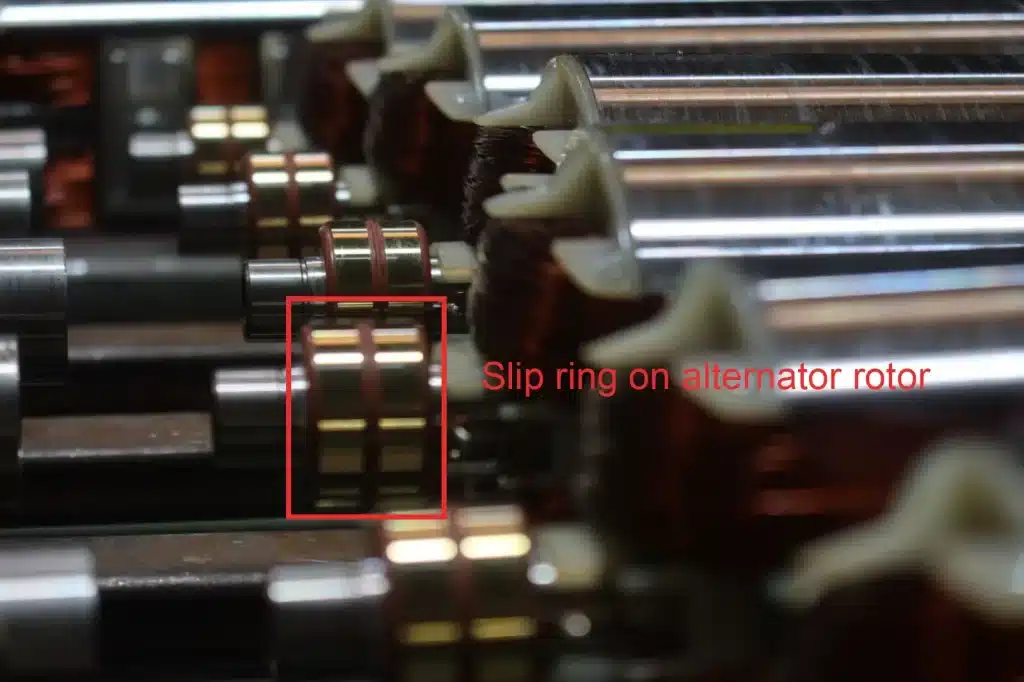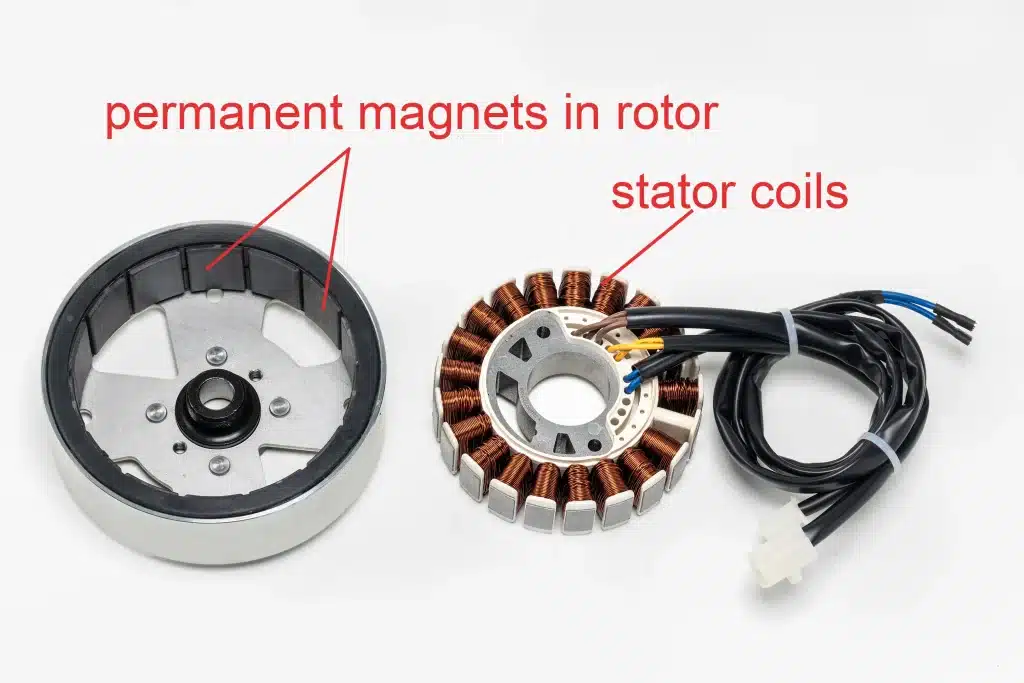Permanent Magnet Alternators (PMAs) represent a significant advancement in the field of power generation, utilizing permanent magnets instead of traditional excitation systems to generate electricity. PMAs offer benefits such as high efficiency, low maintenance, and high reliability, making them suitable for various power generation and storage systems. This article delves into the working principles, advantages, applications, challenges, and future prospects of PMAs, highlighting their importance in modern power generation.
1. What Are Permanent Magnet Alternators?
1.1 Traditional Alternator Working Mechanisms
Traditional alternators rely on an excitation system, using brushes and a slip ring to transfer current to the rotor windings, generating a magnetic field. This magnetic field induces an electromotive force in the stator windings, producing AC electricity. The friction and wear of brushes and the commutator are common sources of failure in traditional alternators, increasing maintenance costs.

1.2 Structure and Working Principles of PMAs
Permanent Magnet Alternators use permanent magnets as the rotor’s magnetic field source, eliminating the need for an additional excitation current. The stator contains coils, and as the rotor spins, the magnetic field cuts through the stator coils, inducing an electromotive force and generating AC electricity. This design eliminates brushes and the commutator, reducing mechanical wear and maintenance requirements.
Components of Stator and Rotor
- Stator: Contains multiple coils arranged in fixed positions.
- Rotor: Embedded with permanent magnets, generating a constant magnetic field.
Generation and Role of the Magnetic Field
As the rotor spins, the magnetic field from the permanent magnets cuts through the stator coils, inducing an electromotive force, which is converted into AC electricity output.

1.3 Comparison with Traditional Electrically Excited Alternators
- Efficiency: PMAs are more efficient due to the absence of excitation current.
- Maintenance: PMAs do not have brushes and a commutator, reducing maintenance needs.
- Reliability: The simplified design of PMAs results in fewer failure points.
2. Why Choose Permanent Magnet Alternators?
2.1 High Efficiency
The design of PMAs eliminates the need for an additional excitation current, reducing energy loss and increasing overall efficiency. Traditional alternators require a portion of the generated energy to maintain the excitation current, whereas PMAs convert more energy into useful power output.
2.2 Simple Structure
PMAs use a brushless design, removing the need for brushes and a slip ring. This not only reduces mechanical friction and wear but also lowers maintenance costs and downtime. The brushless design enhances the reliability of PMAs, making them suitable for applications requiring long-term continuous operation.
2.3 High Reliability
With no brushes and a slip ring, PMAs have fewer common mechanical failure points. Traditional alternators’ brushes and commutators are prone to wear and require regular replacement and maintenance, while PMAs’ design is more durable and can withstand harsh environments.
2.4 Excellent Starting Performance
PMAs can produce stable voltage output even at low rotational speeds, making them superior in starting performance. Traditional alternators may require higher rotational speeds to generate sufficient voltage, while PMAs can provide stable power output at lower speeds, simplifying the starting process.
3. Main Applications of Permanent Magnet Alternators
3.1 Renewable Energy
PMAs are widely used in wind and hydropower generation due to their high efficiency and reliability. In wind power, PMAs can be directly connected to wind turbines, offering efficient power conversion. In hydropower, PMAs can operate stably under low-speed and high-load conditions, ensuring continuous power supply.
3.2 Industrial Sector
PMAs are extensively used in backup power systems and as power sources for industrial equipment. Their high efficiency and reliability ensure continuous operation during power outages, reducing downtime and production losses. In high-demand environments, PMAs provide stable power supply, ensuring the normal operation of equipment.
3.3 Automotive Industry
PMAs play a crucial role in electric and hybrid vehicles, providing efficient power sources. Their high efficiency and low maintenance make them ideal for automotive applications. In marine and aviation applications, PMAs offer efficient and reliable power solutions, meeting the stringent power equipment requirements in these fields.
3.4 Portable Devices
PMAs are also widely used in portable generators and emergency power supplies. Their efficient and reliable power output makes them ideal for outdoor activities and emergencies. In portable applications, the brushless design and low maintenance needs of PMAs are crucial, ensuring long-term stable operation of the equipment.
4. Challenges and Future Prospects of Permanent Magnet Alternators
4.1 Existing Challenges
Despite the numerous advantages of PMAs, the cost and supply of magnet materials limit their widespread application. Rare earth magnets are a key component of PMAs, and their cost and supply are influenced by the global market. Additionally, the effects of temperature on magnetic properties present a challenge, as high temperatures can degrade the performance of magnets, affecting the efficiency and reliability of the alternator.
4.2 Technological Advancements
To overcome these challenges, researchers are developing new materials and optimizing design and manufacturing processes. The development of new magnet materials promises to lower costs and improve performance. Meanwhile, advanced manufacturing processes and design optimization will further enhance the efficiency and reliability of PMAs. Through technological innovation, the application prospects of PMAs will be broader.
4.3 Market Outlook
With the increasing demand for renewable and clean energy, the PMA market will continue to grow. Policy and environmental drivers will also promote the development of PMAs. Government support and the implementation of environmental regulations will facilitate the adoption of PMAs in various fields, promoting the global energy structure transformation.
Conclusion
Permanent Magnet Alternators hold significant importance in modern power generation, with their high efficiency, reliability, and low maintenance making them widely adopted in various applications. As technological advancements and market demand increase, PMAs will play a larger role in promoting sustainable energy development. By understanding the working principles, advantages, application fields, and future prospects of PMAs, we can better utilize this advanced technology to drive continuous progress in modern power generation.
